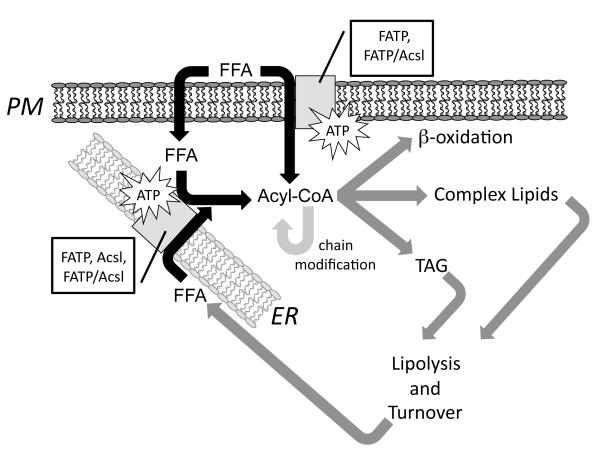Figure 1.
Overview of FATP and Acsl functions in fatty acid transport and intracellular trafficking. The movement of fatty acids (FFA) across the plasma membrane (PM) through vectorial acylation requires FATP alone or in combination with an Acsl; the resulting product is acyl CoA. FFA may also move across the membrane by a diffusion process that may involve intracellular fatty acid binding proteins. Prior to any type of metabolic transformation, this fatty acid must also be activated to form acyl CoA. As illustrated this may proceed in the endoplasmic reticulum (ER) through specific FATPs or Acsls individually or through an FATP/Acsl complex. As illustrated acyl CoA is the crucial intermediate that is required for b-oxidation and synthesis of complex lipids and triglycerides (TAG). As part of normal lipid turnover or lipolysis of TAG is the formation of FFA, which must be reactivated to enter the metabolic pools. Acyl CoA is shown as a single pool, but in all likelihood these pools are compartmentalized, for example as is the case for those involved in acyl chain modification (elongation and desaturation). The role of the different FATP and Acsl isoforms is thought to promote both specificity and selectivity to these processes.

